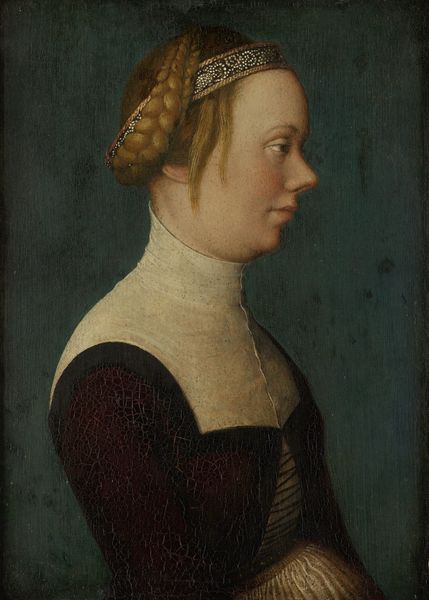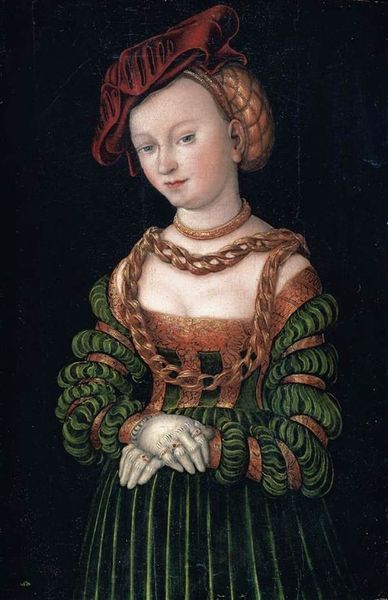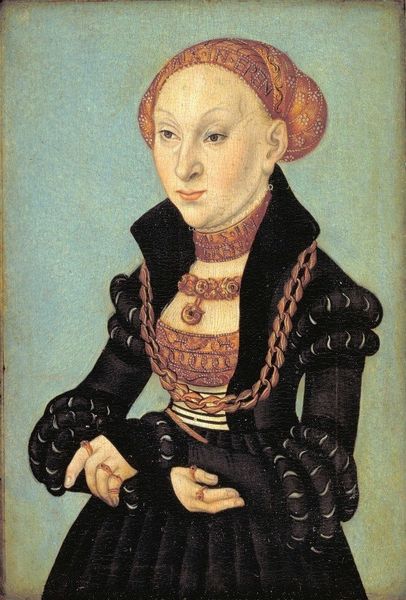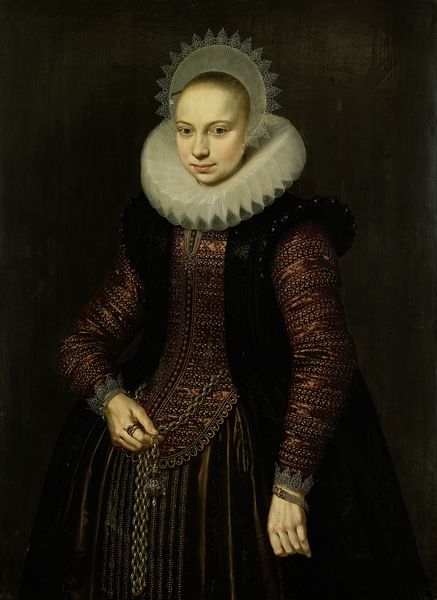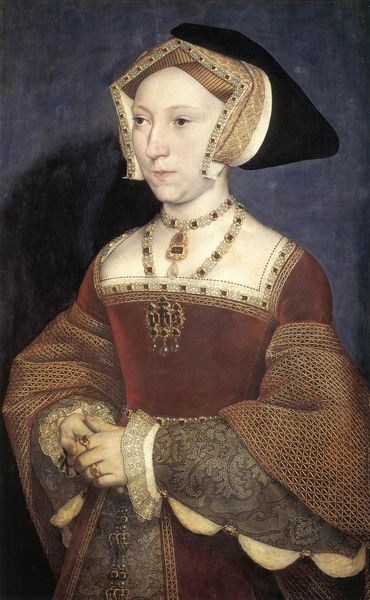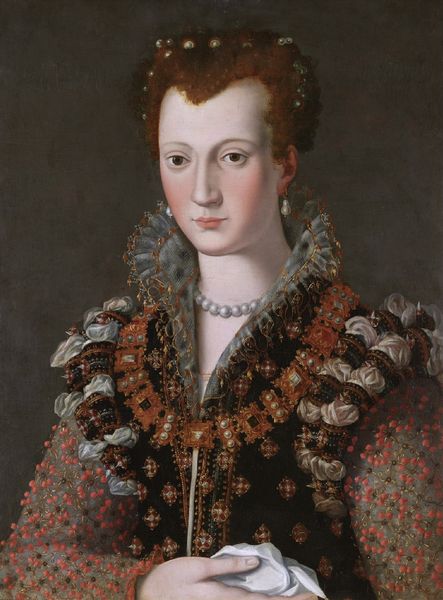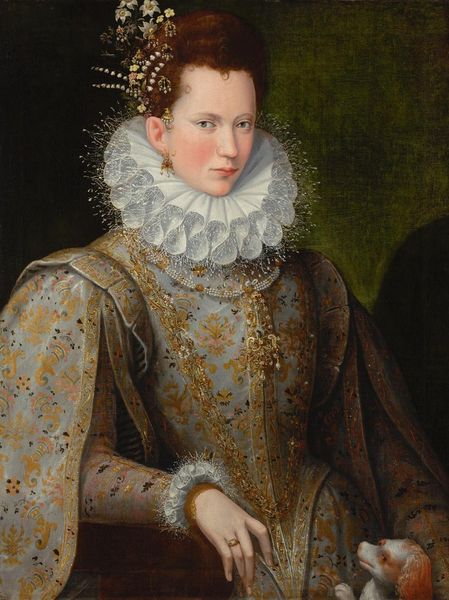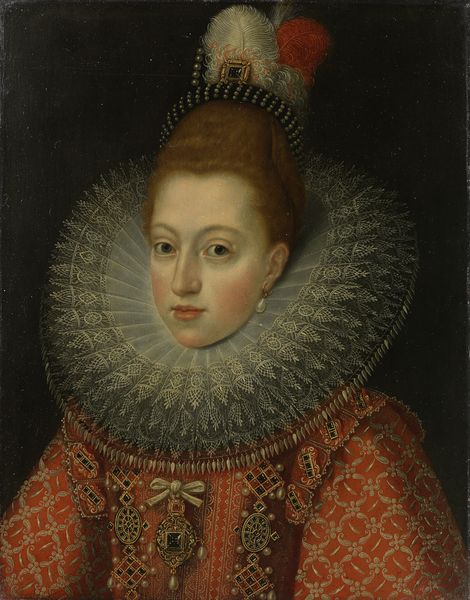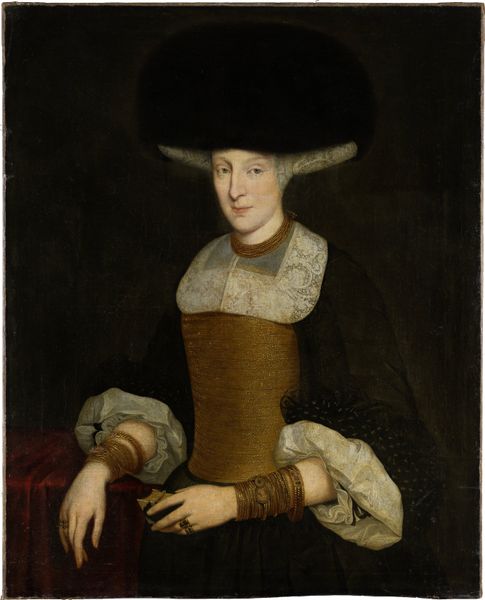
Portrait of a Young Woman. Princess Emily of Saxony? 1492 - 1537
0:00
0:00
oil-paint, wood
#
portrait
#
oil-paint
#
figuration
#
oil painting
#
wood
#
northern-renaissance
#
portrait art
Dimensions: 41.5 cm (height) x 25.5 cm (width) (netto), 59.8 cm (height) x 45.3 cm (width) x 8 cm (depth) (brutto)
Curator: Looking at this painting, one is struck by the air of youthful dignity that Lucas Cranach the Elder captured here. This is thought to be "Portrait of a Young Woman, possibly Princess Emily of Saxony", painted in oil on wood, sometime between 1492 and 1537. Editor: The first thing that hits me is the intensity of her gaze, coupled with a kind of somber stillness. There’s something almost melancholic about her expression, even within all that opulent detail of her clothing. Curator: Opulence carefully designed and deployed, no doubt, for symbolic effect. Consider the context; these were powerful ruling families keen on self-presentation and controlling public perception. A portrait like this reinforces that message. Editor: Exactly. What stories are the clothes telling? Look at that girdle around her waist— is it a visual statement about control, containment? And how does that influence the gaze we perceive from her, seemingly trapped within the bounds of her own class and status? Curator: It’s tempting to read her gaze in those terms, definitely. But Cranach’s portraits often serve a more complex, coded purpose, functioning as markers of diplomatic alliances or familial achievements, designed to broadcast dynastic power to other elite courts. It may be useful to note that during Cranach's lifetime, social and political roles were dictated in paintings like these through various visual devices to show family wealth. Editor: So her ‘performance’ is also shaped by who gets to see this painting, the socio-political purpose that it plays within those powerful social circles? I guess my interest is in uncovering those less-visible tensions between how the portrait functions and any subtle hints towards an individual selfhood pushing through it. Curator: That’s a valid question, absolutely, and I think the historical record gives us just enough insight to ponder it further. Editor: Right. It highlights that art isn't just a pretty thing on the wall, but that these visuals work through historical and current cultural frameworks that continue to shape perceptions about gender and privilege. Curator: Precisely. This Northern Renaissance piece, with its rich symbolism and context, offers avenues for thought and, maybe, action.
Comments
No comments
Be the first to comment and join the conversation on the ultimate creative platform.


